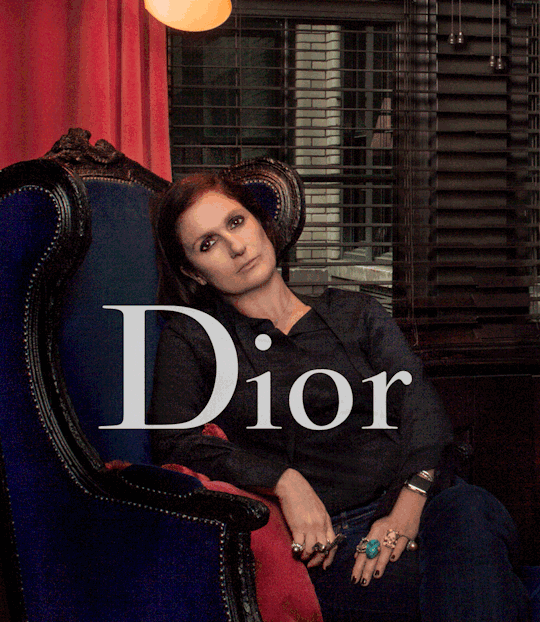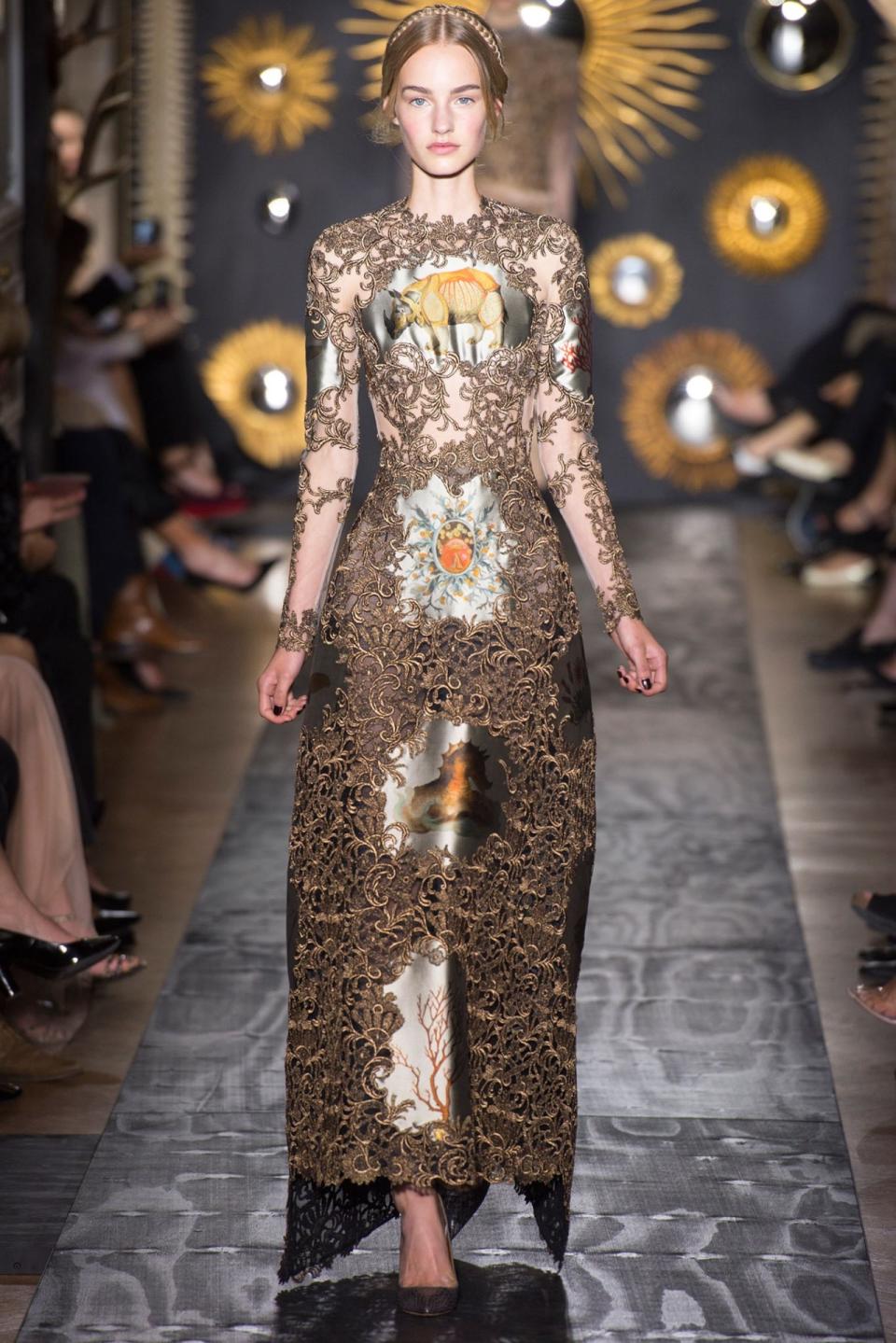What Maria Grazia’s Move to Dior Means for the Future of Fashion

Photo: Matthu Placek for Yahoo Style.
It was announced this morning that Maria Grazia Chiuri, formerly co-creative director of Valentino, has been appointed as the creative director of Christian Dior — an especially noteworthy installment, given that she is the first female head of a label that is often described as a bastion of Parisian femininity. The unveiling follows months of speculation after Raf Simons’s departure from Dior in October last year. Pierpaolo Piccioli, with whom Chiuri ran Valentino, will remain at the Italian label as its sole chief. Bernard Arnault, who owns Dior, called Chiuri’s talent “enormous” — and few in the industry would argue with that statement.
Fashion fans know Chiuri and Piccioli for the team’s fantastical levels of workmanship and the extraordinary imagination they brought to Valentino, where they became co-creative directors in 2008 following the retirement of label’s founder, Valentino Garavani. Yet what audiences might not realize is Chiuri’s exceptional credentials, in accessories in particular, have been the bread and butter of many a luxury shop.
Another Italian fashion house, Fendi, hired Chiuri in 1989 to work in its accessories department. While there, she actually brought Piccioli on board (their story starts well before the Valentino days). In 1999, they decamped to Valentino, where too they developed accessories (they also ended up designing the house’s Red diffusion line).

The Valentino “Rock Stud” shoe. Photo: Courtesy of Valentino.
Once installed as Valentino’s dual chiefs, the two transformed the company into a thing of modern wonder. Their popular “Rock Stud” application, which are pyramidical embellishments seen on everything from strapped heels to tote bag handles, became ubiquitous at galas, premieres and in global street style photos. It takes a certain kind of commercial genius to create a branded, recognizable thing without actually applying a logo. Dior, while retaining a strong accessories business, does not have the same cache at the moment in terms of an “it,” or at least galvanizing, bag or shoe. The company will doubtlessly benefit from Chiuri’s decades of experience in the category.
What will be equally as interesting is to see what Chiuri does, independently, with both Dior’s ready-to-wear and couture lines (she’s responsible for each, in addition to accessories). At Valentino, she became known for creating exceptional and ambitious dresses — though not so ambitious, as in, over-the-top, that women weren’t buying them. (This writer has heard stories of young ladies in Palm Beach, Florida, purchasing six at a time.) Her and Piccioli’s lineups were often enormous, though rarely tiring. Together, they found a sweet-spot that was gilded in everything one wants from capital-F Fashion (think: demi-couture quality in ready-to-wear, exospheric hits of fantasy and indulgence in couture, and red-carpet recognizability throughout), but that, at its core, was salable, thanks to flattering shapes and well-rounded merchandising. (In a way, Chiuri and Piccioli are an antecedent to what Alessandro Michele is currently doing at Gucci — that is, building out a wardrobe season-upon-season, as opposed to making major changes with each new collection).

The opening look from Valentino’s Fall 2013 Couture “Cabinet of Curiosities” collection. Photo: Getty Images
Highlights from Chiuri’s time at Valentino include Fall 2013 couture’s Cabinet of Curiosities collection, especially a long-sleeve dress featuring golden filigree flourishes and, somewhat absurdly but in all the right ways, silken prints of rhinoceros anatomy and coral fronds. Spring 2014 couture delivered the now famous music-note dress, which was worn on the red-carpet by Katy Perry. Fall 2015 ready-to-wear featured remarkable manipulations of mod-art patterns—they were wildly graphic, but not obnoxiously so. And, at Fall 2016 couture, shown just days ago in Paris, Chiuri stepped away from the house with a high song: the collection, designed with Shakespearean airs in mind (2016 marks 400 years since Shakespeare’s death), boasted elegant Elizabethan-inspired gowns, ranging from the ornately foiled (see a sheer, sculpted-top dress overlaid with bronze pseudo-chainmail) to the regally color-blocked. In the simplest terms possible, and regardless of whether or not one was a Valentino client, Chiuri offered something for most everyone’s tastes, and, inviolably, created clothes that were very, very attractive. This was essential in her programming, and will likely continue in her work at Dior.
So what’s to expect? Dior’s visual track record is varied — there’s no one “style” apparent. John Galliano, who served as Dior’s creative director from 1997 until he was fired for anti-Semitic remarks in 2011, was outré and theatrical; Raf Simons was cool, calm, collected and quirky, injecting architectural form and artful wonder into the Dior story. Chiuri’s aesthetic, at least observationally, seems to sync well with founder Christian’s penchant for extraordinary dressmaking, in both a minimal and maximal sense. Where they differ might be in line; Dior’s wasp-waisted and full-skirted New Look silhouette had something of an austerity about it, a defiant chicness, where Chiuri’s output has consistently been more lush and more loose. Then again, take Dior’s breathtaking “Junon” dress from Fall 1949: the strapless gown was inspired by Juno, the patron Goddess of Rome, and featured silk-net petal-paneling embellished with thousands of sequins. At Valentino, Chiuri and Piccioli often looked to mythology and the ancient-era for cues—there are definite, thrilling-to-consider correlations. All eyes will be on Chiuri when she reveals her first designs for Dior on September 30 of this year in Paris.
There’s further reaching significance to Chiuri’s hiring, as well. As aforementioned, she is the first woman to head Dior, which might be surprising given the house’s legacy and reputation. But beyond that, it’s encouraging and noteworthy that a woman, industry-wide, is being given such a high-profile role; men have long been the majority in the upper-echelons of design chair duties. But the weathervane is turning. Recently, Bouchra Jarrar was employed recently for the position at Lanvin, replacing Alber Elbaz. Phoebe Philo has been a success story at Céline. Sarah Burton, too, at Alexander McQueen. With the Dior job being one of the most illustrious posts in the business, the appointment is momentous. All eyes will be on Chiuri’s runway when she reveals her first collection for Dior on September 30 of this year in Paris.
Follow us on Instagram, Facebook, and Pinterest for nonstop inspiration delivered fresh to your feed, every day.
